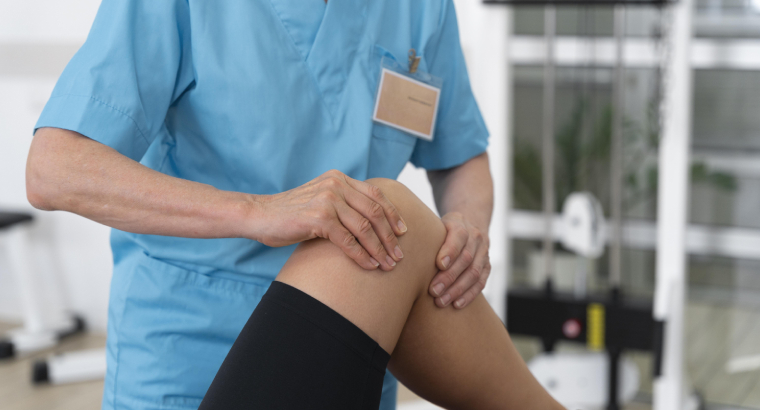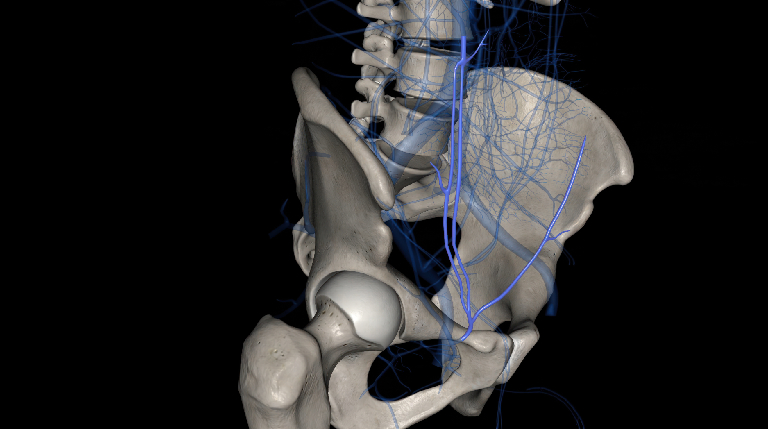
Comprehensive Joint Care- ACL and Knee Replacement Combined with Rotator Cuff Surgery and Ankle Arthroscopy
Synopsis
Regarding joint health, multiple procedures may be necessary to restore full function and alleviate pain. A comprehensive approach is essential for patients who require ACL and knee replacement combined with rotator cuff surgery or ankle arthroscopy. This blog explores scenarios where such combined surgeries are recommended, focusing on how ACL-sparing knee replacement techniques can be utilised alongside other procedures like rotator cuff surgery and ankle arthroscopy. We’ll discuss the challenges of knee replacement after ACL reconstruction and how ACL replacement can be integrated into these complex surgical plans. Additionally, understanding when to combine these treatments and how to prioritise recovery strategies is crucial for long-term joint health. Whether you’re dealing with knee instability, shoulder injuries, or ankle issues, this guide will help you navigate the intricacies of multiple joint surgeries and the benefits of a holistic treatment plan.
Table of Contents
- Introduction to Comprehensive Joint Care
- When to Consider Combining ACL and Knee Replacement
- The Role of ACL Sparing Knee Replacement in Joint Surgery
- Integrating Rotator Cuff Surgery with Knee Procedures
- Ankle Arthroscopy in Multispecialty Joint Treatment
- Challenges of Knee Replacement After ACL Reconstruction
- Recovery Strategies for Multiple Joint Surgeries
- Why YKOrthopaedics is Your Best Choice for Comprehensive Joint Care
Introduction to Comprehensive Joint Care
Joint health is a complex field, particularly for patients requiring treatment for multiple joints simultaneously. Whether it’s a combination of ACL and knee replacement, rotator cuff surgery, or ankle arthroscopy, coordinating these procedures requires expertise and precision. For individuals suffering from knee instability, shoulder injuries, or ankle issues, combining these treatments may provide the best chance for long-term recovery and restored mobility. This blog delves into the intricacies of performing these surgeries together, focusing on when and how such combinations are recommended. By integrating advanced techniques like ACL-sparing knee replacement, rotator cuff surgery or ankle arthroscopy, patients can achieve comprehensive results that address all their joint concerns in one unified plan.
When to Consider Combining ACL and Knee Replacement
Combining ACL replacement with knee replacement is often recommended in cases of severe joint damage or instability. For patients who have already undergone ACL reconstruction and continue to experience pain or functional limitations, knee replacement may be necessary. The decision to combine ACL replacement with knee replacement depends on factors like the extent of ligament damage, joint degeneration, and the patient’s overall health. In many cases, ACL-sparing knee replacement techniques are utilised to preserve as much of the natural ligament as possible, providing better outcomes and reducing recovery times. When coupled with procedures like rotator cuff surgery or ankle arthroscopy, a holistic approach is taken to ensure that all joint-related issues are addressed simultaneously.
The Role of ACL Sparing Knee Replacement in Joint Surgery
ACL-sparing knee replacement is designed to maintain the integrity of the anterior cruciate ligament (ACL) while performing a knee replacement. This approach particularly benefits younger, active patients who require knee stability and natural movement. In cases where patients need ACL replacement and knee replacement, using ACL-sparing techniques can enhance long-term outcomes by preserving the function of the original ligament. Additionally, this method reduces the need for revision surgeries, making it a preferred choice for those facing multiple joint surgeries, including rotator cuff repair and ankle procedures. Integrating this technique into a comprehensive treatment plan significantly advances joint surgery.
Integrating Rotator Cuff Surgery with Knee Procedures
Rotator cuff surgery is commonly performed to address shoulder pain and instability, often caused by tears or inflammation in the tendons. Timing and coordination are key for patients requiring rotator cuff surgery and knee replacement or ACL replacement. Combining these surgeries is common, especially in patients needing comprehensive joint care. The recovery process for rotator cuff surgery is distinct from knee procedures, but with proper planning, both surgeries can be managed effectively. Integrating rotator cuff repair with ACL-sparing knee replacement allows patients to tackle multiple joint issues simultaneously, reducing overall recovery time and streamlining the rehabilitation process.
Ankle Arthroscopy in Multispecialty Joint Treatment
Ankle arthroscopy is a minimally invasive procedure to diagnose and treat conditions like ligament tears, bone spurs, or cartilage damage in the ankle joint. When combined with knee replacement after ACL reconstruction or in conjunction with ACL replacement, ankle arthroscopy offers a comprehensive solution for patients with lower limb joint issues. The key to successful outcomes lies in coordinating these procedures to ensure that recovery timelines align and each joint is treated with the appropriate level of care. For patients undergoing multiple joint surgeries, ankle arthroscopy provides a minimally invasive option that complements more extensive procedures, allowing quicker rehabilitation and improved mobility.
Challenges of Knee Replacement After ACL Reconstruction
Knee replacement after ACL reconstruction is a challenging procedure due to the altered anatomy from previous surgeries and the presence of scar tissue. Care surgical planning is necessary to avoid complications for patients requiring ACL replacement and knee replacement or ACL-sparing knee replacement. The main challenge lies in balancing the need for joint stability with preserving existing structures. Additionally, when these procedures are combined with rotator cuff surgery or ankle arthroscopy, a multidisciplinary approach is often required to address all aspects of the patient’s joint health. Ensuring that each procedure is executed precisely can significantly enhance recovery outcomes and reduce the need for future interventions.
Recovery Strategies for Multiple Joint Surgeries
Recovering from multiple joint surgeries, such as combining ACL and knee replacement with rotator cuff repair or ankle arthroscopy, requires a comprehensive rehabilitation plan. Patients should expect a phased recovery, beginning with controlled exercises to regain range of motion, followed by gradual strength training. The timing of rehabilitation is crucial, as different joints may require different levels of attention during the healing process. At YKOrthopaedics, our approach to recovery focuses on personalised care plans that address the unique needs of patients undergoing multiple procedures. By coordinating physiotherapy, pain management, and follow-up care, we ensure that each joint heals optimally, reducing the risk of complications and enhancing overall mobility.
Why YKOrthopaedics is Your Best Choice for Comprehensive Joint Care
At YKOrthopaedics, we pride ourselves on offering advanced solutions for patients requiring complex joint care. Whether you’re facing combined ACL and knee replacement, rotator cuff surgery, or ankle arthroscopy, our team of experts provides personalised care plans tailored to your unique needs. We specialise in integrating multiple procedures into a cohesive treatment strategy that ensures the best possible outcomes. With state-of-the-art technology, experienced surgeons, and a patient-first approach, YKOrthopaedics is your trusted partner in achieving comprehensive joint health. You can access a team dedicated to helping you regain mobility and enjoy a pain-free life by choosing us.
Conclusion- Why YKOrthopaedics is the Right Partner for Your Joint Health Journey
For patients with multiple joint issues, choosing a provider with the expertise and experience to handle complex cases is crucial. YKOrthopaedics offers a multidisciplinary approach, combining advanced techniques like ACL-sparing knee replacement, rotator cuff surgery, and ankle arthroscopy into a single, coordinated treatment plan. Our commitment to delivering personalised care and achieving optimal outcomes makes us the ideal choice for those seeking comprehensive joint health solutions. Trust YKOrthopaedics to guide you through your recovery and help you return to the activities you love.
FAQs
Yes, ACL and knee replacement can be combined with rotator cuff surgery in cases where patients require comprehensive joint care. This approach particularly benefits individuals experiencing knee instability and shoulder pain due to rotator cuff tears. Coordinating these surgeries allows for a unified recovery plan and reduces the overall rehabilitation time. Combining ACL-sparing knee replacement with rotator cuff repair provides a holistic solution, addressing multiple joint issues simultaneously. However, this requires meticulous planning and timing to ensure successful outcomes and smooth recovery across all affected joints.
ACL-sparing knee replacement is a technique that preserves the anterior cruciate ligament (ACL) while replacing the damaged knee joint. This method is recommended for younger, active patients who need to maintain knee stability and natural movement post-surgery. It is often used in cases where patients have already undergone ACL reconstruction and still require a knee replacement. By sparing the ACL, this approach allows for more natural knee function, reduces recovery time, and minimises the risk of further complications. This technique is particularly useful in complex joint procedures where maintaining natural ligament function is crucial.
Ankle arthroscopy is a minimally invasive procedure to diagnose and treat various ankle conditions, such as ligament tears and cartilage damage. Ankle arthroscopy offers a comprehensive approach to joint care when combined with ACL replacement or knee replacement after ACL reconstruction. This procedure is often performed with other joint surgeries to address multiple issues in one coordinated plan. The benefits of integrating ankle arthroscopy include:
- Faster recovery.
- Precise treatment of ankle conditions.
- The ability to streamline the rehabilitation process for patients with multiple joint concerns.
Knee replacement after ACL reconstruction is complex due to the presence of scar tissue, altered anatomy, and previous grafts. The main challenges include ensuring the proper alignment of the knee replacement components and preserving the integrity of any existing ligaments or grafts. Surgeons must carefully navigate these issues to avoid complications and achieve optimal outcomes. Additionally, surgical planning becomes even more critical when knee replacement is combined with procedures like rotator cuff surgery or ankle arthroscopy. An experienced surgeon specialising in such complex cases is essential for minimising risks and ensuring a successful recovery.
Recovery from multiple joint surgeries requires a phased and coordinated approach to rehabilitation. The initial phase focuses on regaining the range of motion in all treated joints, followed by strength training and gradual reintroduction of activities. For patients undergoing ACL and knee replacement combined with rotator cuff surgery or ankle arthroscopy, it’s important to follow a structured rehab plan that addresses each joint individually while also considering the body’s overall recovery. Physical therapy is critical in ensuring all joints heal correctly and regain functionality. Additionally, following your surgeon’s advice on pain management, exercise, and activity levels is key to a smooth recovery.




